
Background information
The ridge walker
by Michael Restin

The "Black Hawk" sports sled, star of the ski slopes, not only looks amazing, it's completely different. Behind it lies a story of new ideas, old skates and people wanting to get back on track.
It is assembled in Oftringen, within the Stiftung Wendepunkt, a foundation facilitating professional and social integration. To produce there is to accept that things happen a little differently. "We have a high turnover rate," explains Alex Truninger of his team. "As soon as someone finds a job elsewhere, they jump ship."
This is entirely in keeping with the mission carried out within the foundation. People who have been sidetracked for a variety of reasons need to be able to find their way back. To do this, they need support: a positive environment in which everyone can contribute to the best of their ability and get the breaks they need: "You can't expect too much from someone whose performance is restricted because of psychological problems."
For the skilled joiner who uses the word "customers" to describe his employees, this is a real challenge. He has to find tasks suited to their abilities and, where necessary, develop procedures that can be mastered without specialist training. "It's downright juggling," he quips over a coffee.
The pandemic is also complicating the situation in this area, but he doesn't seem frustrated for all that. It's mid-October and the second wave of the pandemic has yet to sweep through Switzerland. The man remains positive and as open as his blue and white checked shirt. He seems to enjoy the circus that results when people don't have to function like machines.
With empathy and meticulousness, he finds creative solutions to ensure that the production runs satisfactorily for everyone involved: "We can't just pretend to be sustainable and socially minded, at some point we also have to meet certain deadlines. We have to stick to them, despite the coronavirus and everything that follows."
This is how photo frames, explosion bags and sledges are created in the workshop. Right now, we're stacking tubes, tarpaulins and pairs of runners waiting to be assembled.
A key part of its structure comes from Hess & Co, in Döttingen, Aargau, a company that makes veneer wood used in the skis of World Cup stars such as Beat Feuz. But it remains a material unheard of in the construction of a sled.
"Yves wanted a narrow radius, so we reached our limits with steam bending," explains Alex Truninger. "Pressed, the wood is dimensionally stable and dimensionally stable. It's an incredibly precise product."
These parameters are essential during assembly. "In production, we place a steel tube that fits perfectly into the holes."
The sled stands out from its competitors, both visually and fundamentally. Enthusiasts can only agree, letting their eyes wander over the dynamically shaped silhouette devoid of the usual steel runners. Instead, he sees black ski-like skins. The word ski often comes up in Alex Maienfisch's mouth.
Although everything seems to indicate that the ski producer had been planning a sled based on the principles of this sliding sport for a long time, he came into contact with the project by chance: "Yves and I have offices next door to each other, and he told us about his idea," explains Alex Maienfisch. "That's how we ended up marketing with Mach, but he was the inventor of the whole thing."
All the parts of the 'Black Hawk' have been dyed and coloured for a long time, but Alex Truninger wants to show just how much thought has gone into the process. From the precision-built paint tank to the extralong agitator, every detail is planned so that customers can work efficiently with him. It was Yves Aeschbacher who came up with the design, and Alex Truninger speaks very highly of him: "He really is a jack-of-all-trades."
They both seem to inspire each other. Indeed, Alex Truninger also has to be creative in order to meet all the demands with his team. You can see how much work goes into a detail as small as a rounded edge. With the right milling machine, this small cutting job is no problem for a joiner. But it's nothing that can be done in series safely and accurately.
A problem? No problem at all! "It's a great challenge," thinks Alex Truninger, who starts tinkering. He screwed on the wheels from his children's old skates, bought ball bearings and played with the all-purpose cutter Yves had ordered. In the end, he built a machine that gave the soles the perfect polish. All his customers have to do is use it for the other parts. "Now that's a sure thing," he smiles.
This freshly milled and painted piece will soon be making its debut on the slopes of Switzerland. The 'Black Hawk' has already been available at various rental resorts since last year, and version 2.0 is currently being assembled. Yves Aeschbacher has again optimised the seat design.
"The sled makes a rental winter," explains Mach founder Alex Maienfisch. It is put through its paces, treated ruthlessly and then refurbished. The first conclusions to be drawn from continuous use? "Our sole doesn't rust and has better gliding properties. On flat ground, you outrun everyone else and don't have to propel it.
For tenants, it's practical because it stacks up and it's easy to maintain,
explains Alex Maienfisch: "After two years, all you have to do is loosen two screws and change the covering. It also offers another advantage, brushing the covering is quicker than steel runners."
Assembly of the sleds is still underway. Then they will be stacked and delivered. To ensure that everything goes smoothly, Alex Truninger has once again had to show that he has more than one trick up his sleeve. At the back of the workshop, a cordless screwdriver sets the scene.
Joël and Christian assemble the various parts, thread the tapes and ensure that the stacks of finished sledges increase steadily. "They're temps from a Salvation Army company, and we support each other," explains Alex Truninger. "Great, skilled people."
Simple writer and dad of two who likes to be on the move, wading through everyday family life. Juggling several balls, I'll occasionally drop one. It could be a ball, or a remark. Or both.
Interesting facts about products, behind-the-scenes looks at manufacturers and deep-dives on interesting people.
Show allAlex Truninger's explanations are punctuated by technical terms that fly like sawdust around the neon-lit room. Dovetail cutting. Planed coverings. Pre-milled blanks. The 51-year-old production manager knows his stuff, talks fast and describes precisely how a sports sled is made from the components at his disposal. His explanations flow, but one feeling remains: this is not just any sled, nor just any workshop. There's nothing simplistic about Mach's 'Black Hawk', it's a sled that does everything differently.
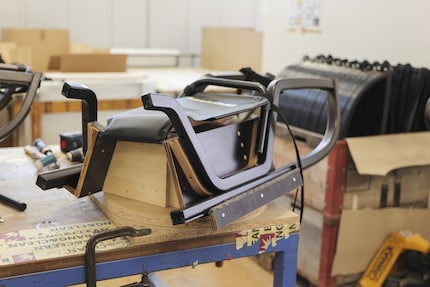
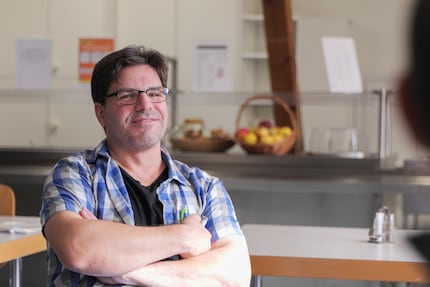
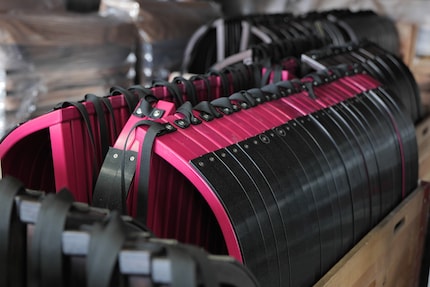

The "Black Hawk" is a project by Solothurn-based industrial designer Yves Aeschbacher, absent on this day but omnipresent in normal times. His ideas can be found in the design and in the workshop. "From a technological point of view, Yves' design is brilliant," says Alex Truninger, who keeps pointing out interesting details. Over the phone, Yves explains how the collaboration came about: "Having done my civilian service at the Stiftung Wendepunkt, I saw the possibilities it offered. He adds, "All the lights were green, I thought this product could be very interesting for employees."
This 30-year-old began rethinking the classic sled while studying industrial design in Basel. That's how the "Black Hawk" came to be over the years. Since then, materials and individual parts from all over Switzerland have been assembled at the foundation. "We don't have state-of-the-art facilities here," explains Yves Aeschbacher. "As a result, we've had to be creative and think about the details; it also works really well that way."
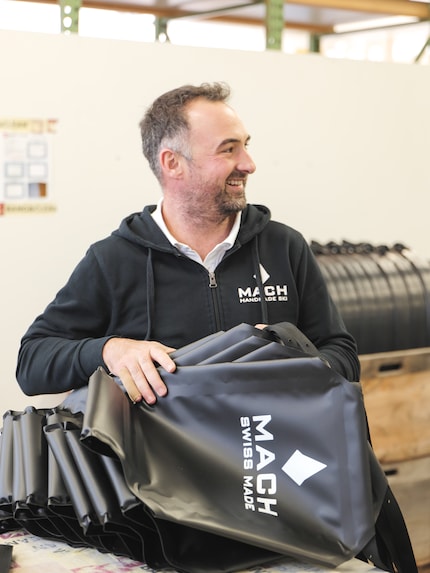
At the age of 36, Alex Maienfisch has been racing. For the past five years, he has been producing high-quality skis using the classic sandwich construction under the Mach brand. The "Black Hawk" is the perfect complement for speed enthusiasts looking for the fun of sledding: "It has wear-resistant ski liners that are much faster than metal soles," he explains, taking hold of one of the surfaces that are slid onto the wood before being screwed on.
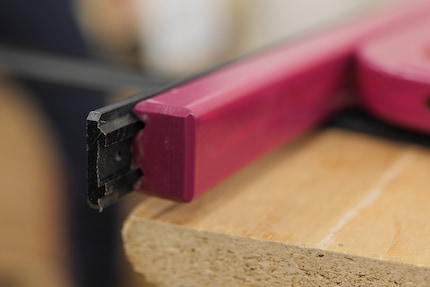

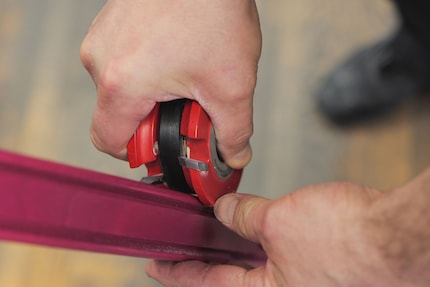
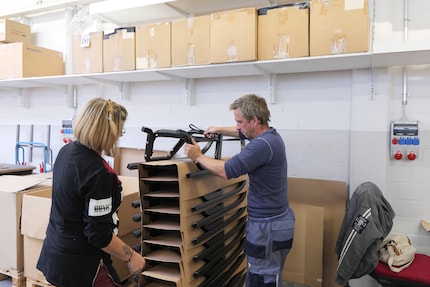
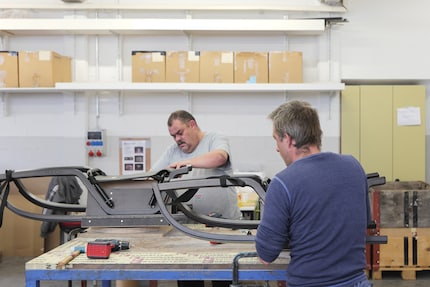

It takes them about 15 minutes per unit. "We have to take our time, the result has to be impeccable," explains Christian, a jovial man sporting a moustache and mischievous, twinkling eyes. In his hands, the sledge seems even more delicate: "I don't know if I'm too heavy. But I'm happy to play the guinea pig. Laughter can be heard in the workshop. Joel, who is currently screwing the steel tube to the wooden parts, would also be willing to give it a try: "I'm more than happy to volunteer," he says between stages of work.
Then comes the lunch break. The workshop empties, dust strewn across the floor and the feeling remains: the 'Back Hawk' is more than the sum of its parts. Its value lies in the appreciation of people and ideas. The creation of such a unique object involves experience, developing processes and testing materials. The end result? A product that is special in so many ways. Yves Aeschbacher has changed almost everything that makes it a classic sled, but without losing sight of it as a model, without ignoring the people who make it. In the best-case scenario, with this sled, for some, it won't be the downhill slope, but the upward one, towards a new life in short.